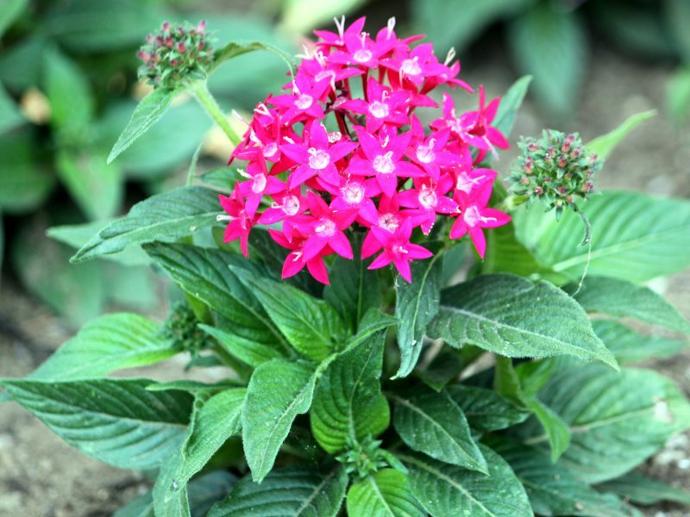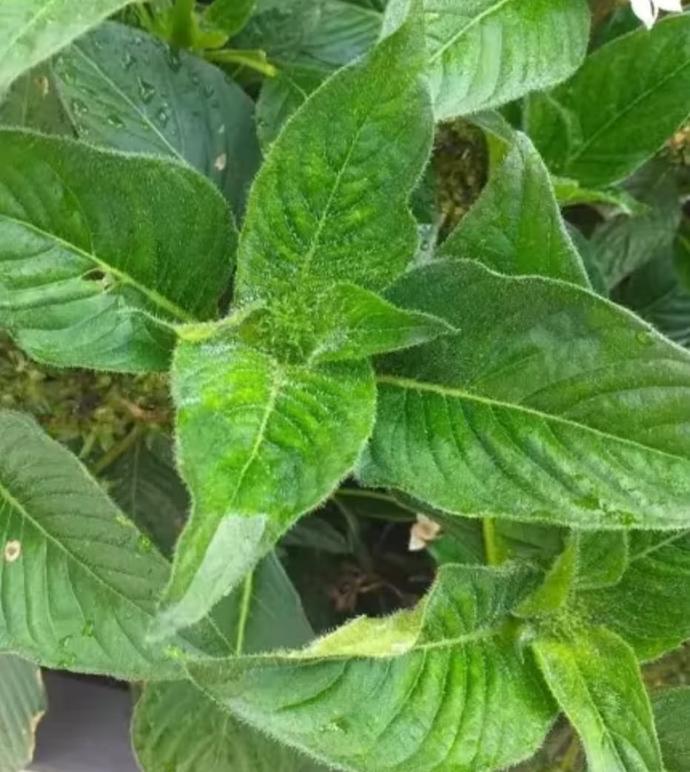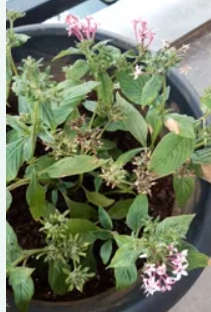Egyptian star cluster Plant
Pentas, also known as Egyptian Star Cluster, is an outdoor flowering plant. Plant in well-draining soil with full sun exposure. Water consistently and deadhead spent flowers for continuous blooming. Pruning helps maintain a compact and bushy appearance.
Habit
Perennial
Height
0.5-1.0 m
Growth
Fast
Soil
Well Drained, loamy
Shade
Full Sun to partial shade
Moisture
Moist
Edible
No
Medicinal
No
Origin
Africa
Climatic Condition
Tropical
Temperature (°)
20-30°C
Humidity (%)
60-70%
Potting media
Garden soil
Fertilizers
Organic compost
Watering
Regular watering; well-drained soil
Plant Weight
0.5-1 kg
Flowering Time
Summer to Fall
Soil Ph level
6.0 - 7.5
Water Ph level
6.0 - 7.0
Soil EC
0.3 - 0.5
Yield Per Plant
20 flower clusters
NPK ratio
10:10:10
life Span
Perennial
Health Benefits
Used for ornamental purposes; attracts pollinators
Suggested Grow Media or Potting Mix ?
50% loamy soil, 30% compost, 20% sand
Suggested Fertigation/Fertilizers
Fertilize every 4 weeks with a balanced fertilizer.
Common Diseases and Remedies
Leaf Rot , Brown Blotch .
Leaf discoloration, wilting, and eventually the browning and rotting of leaves , Brown spots on stems may also be observed
Spray Neem seed kernel extract , Drenching the T . viridae @ 10 G litre of water .
What Is An Egyptian Star Cluster Plant?
The Egyptian star cluster plant, scientifically known as Pentas lanceolata, is a species of flowering plant native to Africa. It is often cultivated as an ornamental plant for its clusters of star-shaped flowers that come in various colors such as white, pink, red, and purple. It's a popular choice for gardens and landscapes due to its ability to attract butterflies and hummingbirds.

2.What are the different types of Egyptian star cluster plant?
1. Pentas lanceolata 'Graffiti Series':-
This series is known for its compact growth habit and large, colorful flower clusters. It comes in various shades including red, pink, lavender, and white, and is well-suited for containers and borders
2. Pentas lanceolata 'Starla Series':-
The Starla series features plants with a more upright growth habit and abundant flower clusters. They come in similar vibrant colors as the Graffiti series and are also ideal for containers, borders, and mass plantings.
3. Pentas lanceolata 'Butterfly Deep Rose':-
This variety produces deep pink flowers that attract butterflies and other pollinators. It has a bushy growth habit and is suitable for both landscape beds and containers.
4. Pentas lanceolata 'Lucky Star Series':-
The Lucky Star series offers compact plants with abundant flowers in shades of red, pink, and white. They are heat-tolerant and make excellent choices for sunny landscapes and garden borders.
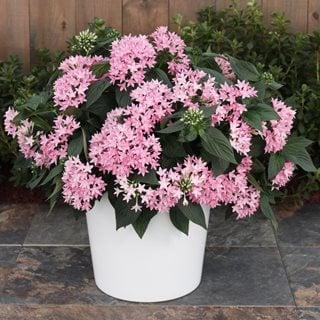
How to care for Egyptian star cluster plant?
1.Location:
Egyptian star cluster plants, or Pentas lanceolata, are native to Africa, specifically regions such as South Africa and Madagascar. They thrive in warm climates and are commonly found in tropical and subtropical areas. In gardens and landscapes, they are typically planted in sunny locations with well-draining soil. They can be grown outdoors in regions with mild winters or as annuals in colder climates. Overall, they prefer locations with plenty of sunlight and moderate temperatures, making them popular choices for gardens in warmer regions around the world.
2.Sunshine:
Egyptian star cluster plants, or Pentas lanceolata, thrive in locations with plenty of sunlight. They prefer full sun to partial shade, meaning they should receive at least 6 hours of direct sunlight each day for optimal growth and flowering. In areas with intense heat, providing some afternoon shade can help prevent stress on the plants. Adequate sunlight promotes robust growth, encourages abundant flowering, and enhances the plant's overall health. Therefore, when selecting a planting location for Egyptian star cluster plants, it's essential to ensure they receive sufficient sunshine throughout the day.
3.Soil:
Egyptian star cluster plants, or Pentas lanceolata, prefer well-draining soil that is rich in organic matter. A loamy soil with good drainage is ideal for these plants to thrive. Adding compost or organic matter to the soil can help improve its texture and fertility, ensuring proper moisture retention while preventing waterlogging, which can lead to root rot.
4.Hydration:
Proper hydration is essential for Egyptian star cluster plants, or Pentas lanceolata, to thrive. These plants prefer consistently moist soil but are sensitive to waterlogging, which can lead to root rot. Therefore, it's important to water them deeply and thoroughly whenever the top inch of soil feels dry to the touch, especially during hot weather or periods of drought.
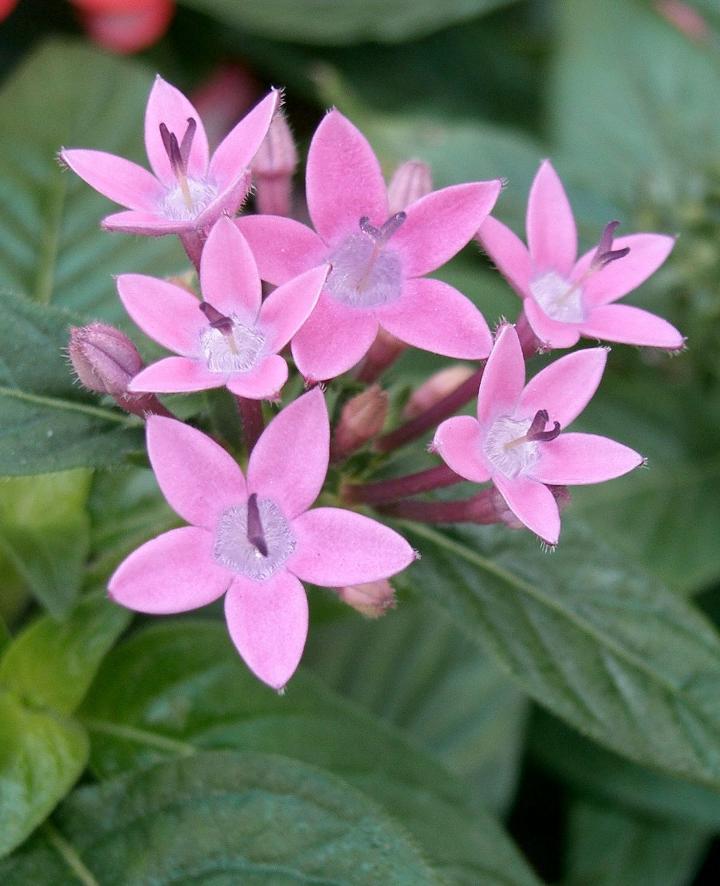
5.Nourishment:
To nourish Egyptian star cluster plants (Pentas lanceolata) effectively, use a balanced fertilizer formulated for flowering plants. Apply the fertilizer every 4-6 weeks during the growing season, typically from spring to early fall.Choose a fertilizer with a balanced NPK ratio, such as a 10-10-10 or 20-20-20 blend, to provide essential nutrients like nitrogen (N), phosphorus (P), and potassium (K). These nutrients support healthy foliage growth, strong root development, and abundant flower production.
6.Issues:
They may be susceptible to pests such as aphids, spider mites, and whiteflies, which can infest the foliage and cause damage. Regular inspection and treatment with insecticidal soap or neem oil can help manage pest infestations. Egyptian star cluster plants may be prone to fungal diseases like powdery mildew, leaf spot, and root rot, especially in humid conditions or if overwatered. Good air circulation, proper watering practices, and avoiding overhead watering can help prevent fungal diseases. Insufficient nutrients in the soil can lead to stunted growth, yellowing leaves, and poor flowering. Regular fertilization with a balanced fertilizer can help provide essential nutrients and prevent deficiencies.
What are the benefits of the Egyptian star cluster plant?
The Egyptian star cluster plant, or Pentas lanceolata, offers several benefits:
Known for its clusters of star-shaped flowers in vibrant colors like red, pink, white, and purple, the Egyptian star cluster plant adds aesthetic appeal to gardens and landscapes. Egyptian star cluster plants are relatively low-maintenance once established, requiring minimal care beyond regular watering and occasional fertilisation. They have a long blooming period, often flowering from spring to fall or even year-round in warmer climates, providing continuous color in the garden. Egyptian star cluster plants are well-adapted to hot and dry conditions, making them suitable for gardens in warm climates where other plants may struggle.
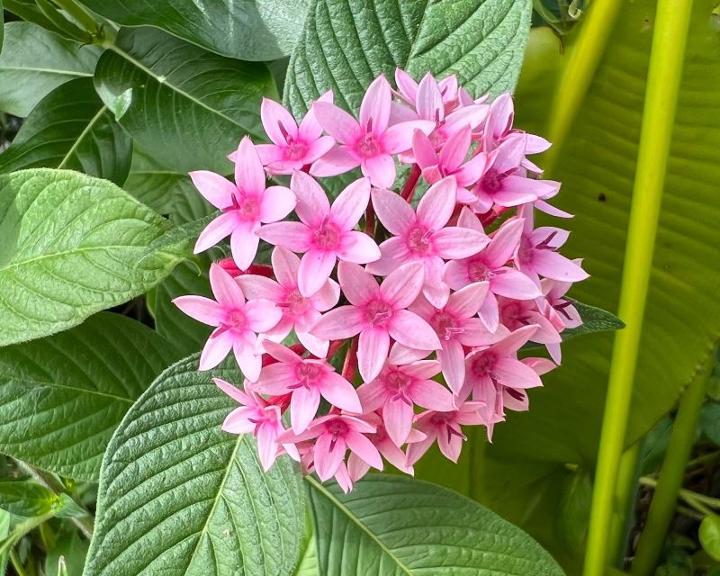
FAQS about growing Egyptian star cluster plant
1.Are Egyptian star cluster plant suitable for container gardening?
Yes, Egyptian star cluster plants (Pentas lanceolata) are suitable for container gardening. Their compact growth habit and vibrant flowers make them excellent choices for adding color and interest to containers, whether on patios, balconies, or as focal points in garden beds.
2.What are the different flower colours available in Egyptian star cluster plant?
Egyptian star cluster plants (Pentas lanceolata) are known for their clusters of star-shaped flowers that come in various vibrant colors. Some of the different flower colors available in Egyptian star cluster plants include:
1. Red: Deep, vibrant red flowers add a bold splash of color to the garden.
2. Pink: Soft pink blooms offer a delicate and charming appearance.
3. White: Pure white flowers create a crisp and elegant contrast against green foliage.
4. Purple: Rich purple flowers add a regal touch to garden beds and borders.
5. Lavender: Light purple or lavender blooms provide a subtle and soothing hue.
3.How often should Egyptian star cluster plant be fertilized?
Egyptian star cluster plants (Pentas lanceolata) benefit from regular fertilization to support healthy growth and abundant flowering. As a general guideline, fertilize Egyptian star cluster plants every 4-6 weeks during the growing season, typically from spring to early fall..
4.What pruning techniques are recommended for Egyptian star cluster plant?
Pruning Egyptian star cluster plants (Pentas lanceolata) helps maintain their shape, promote healthy growth, and encourage continuous flowering. Here are some recommended pruning techniques:
1. Deadheading
2. Thinning
3. Shaping
4. Renewal Pruning
5.What are the varieties or cultivars of Egyptian star cluster plant available?
some varieties and cultivars of Egyptian star cluster plants (Pentas lanceolata):
Graffiti Series
Starla Series
Butterfly Deep Rose
Lucky Star Series
Kaleidoscope Series
